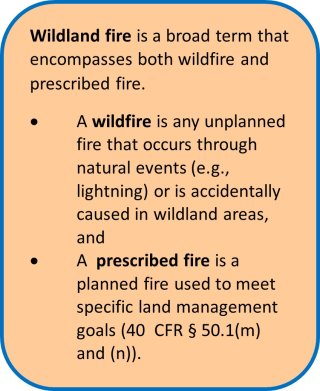Wildfire Smoke - A Growing Public Health Concern

Over the last 20 years, the number of wildfires occurring in the U.S. has remained constant or declined slightly, but there has been a dramatic increase in the acres burned by wildfire, which has resulted in an increase in smoke (CBO, 2022). The increase in acres burned is driven by drier conditions and more than 100 years of fire suppression that resulted in fuel (i.e., vegetation) buildup (U.S. EPA, 2021; Holden et al. 2018). In addition, some regions of the U.S. have been impacted by the transport of smoke from Mexico and Canada. From a public health perspective, smoke from wildfires can impact more people than the fire itself, because smoke is not limited to the area around the fire and can travel greater distances.
With the growing threat of wildfires, the U.S. Government is making a concerted effort to reduce wildfire risk while protecting air quality and public health through various land management activities including prescribed fire (Federal Government Memorandum of Understanding on Wildland Fire and Air Quality Coordination (pdf)) (1787 kb). Prescribed fire can reduce the amount of fuel on the ground and has numerous other functions, such as promoting ecosystem resilience. Additionally, smoke management practices for conducting prescribed fire include a goal of minimizing smoke impacts to the public. Compared to wildfires, the smoke impacts from prescribed fires are generally of shorter duration and more localized. Wildfires can consume much larger quantities of fuels with much greater fire intensity. Wildfires also emit more smoke that can be transported greater distances, impacting entire regions of the country. Smoke from both prescribed fires and wildfires can impact your patients’ health. Because prescribed fires are planned and managed events, there is an opportunity to prepare people and communities for prescribed fire smoke; this opportunity to prepare is often not possible for wildfires (Sacks et al. 2023).
The focus of this course is on providing you, the healthcare provider, with an understanding of wildfire smoke, the health implications of smoke exposure, and the actions and interventions your patients can take to protect their health. While the focus of this course is on wildfire smoke, the information presented will also help you educate your patients about prescribed fire smoke and help you take advantage of the opportunity to prepare them for such events. Taking preventative actions to reduce smoke exposure can protect your patients’ health.
